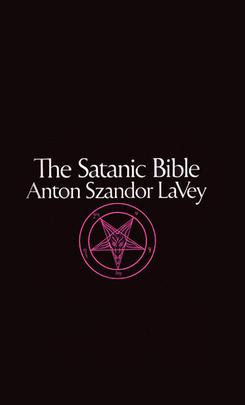LaVeyan Satanism
LaVeyan Satanism is a nontheistic religion founded in 1966 by the American occultist and author Anton Szandor LaVey. Scholars of religion have classified it as a new religious movement and a form of Western esotericism. It is one of several different movements that describe themselves as forms of Satanism.
History
LaVey established LaVeyan Satanism in the U.S. state of California through the founding of his Church of Satan on Walpurgisnacht of 1966, which he proclaimed to be "the Year One", Anno Satanas—the first year of the "Age of Satan." His ideas were heavily influenced by the ideas and writings of Friedrich Nietzsche and Ayn Rand. The church grew under LaVey's leadership, with regional grottos being founded across the United States. A number of these seceded from the church to form independent Satanic organizations during the early 1970s.
In 1975, LaVey abolished the grotto system, after which LaVeyan Satanism became a far less organized movement, although it remained greatly influenced by LaVey's writings. In later years, members of the church left it to establish their own organizations, also following LaVeyan Satanism, among them John Dewey Allee's First Church of Satan and Karla LaVey's First Satanic Church.
Philosophy
The religion's doctrines are codified in LaVey's book, The Satanic Bible.
The religion is materialist, rejecting the existence of supernatural beings, body-soul dualism, and life after death. Practitioners do not believe that Satan literally exists and do not worship him. Instead, Satan is viewed as a positive archetype representing pride, carnality, and enlightenment. He is also embraced as a symbol of defiance against Abrahamic religions, which LaVeyans criticize for suppressing humanity's natural instincts and encouraging irrationality. The religion propagates a naturalistic worldview, seeing mankind as animals existing in an amoral universe. It promotes a philosophy based on individualism and egoism, coupled with Social Darwinism and anti-egalitarianism.
LaVeyan Satanism involves the practice of ritual magic, which encompasses two distinct forms; greater and lesser magic. Greater magic is a form of ritual practice and is meant as psychodramatic catharsis to focus one's emotional energy for a specific purpose. These rites are based on three major psycho-emotive themes: compassion (love), destruction (hate), and sex (lust). Lesser magic is the practice of manipulation by means of applied psychology and glamour (or "wile and guile") to bend an individual or situation to one's will.
Comparison with other forms of Satanism
Theistic Satanism is an umbrella term for religious groups that consider Satan, the Devil, to objectively exist as a deity, supernatural entity, or spiritual being worthy of worship or reverence, whom individuals may believe in, contact, and convene with, in contrast to the atheistic archetype, metaphor, or symbol found in LaVeyan Satanism.
Organizations who uphold theistic Satanist beliefs most often have few adherents, are loosely affiliated or constitute themselves as independent groups and cabals, which have largely self-marginalized. Another prominent characteristic of theistic Satanism is the use of various types of magic. Most theistic Satanist groups exist in relatively new models and ideologies, many of which are independent of the Abrahamic religions.
Luciferianism
Luciferianism is a belief system that venerates the essential characteristics that are affixed to Lucifer, the name of various mythological and religious figures associated with the planet Venus. The tradition usually reveres Lucifer not as the Devil, but as a destroyer, a guardian, liberator, light bringer or guiding spirit to darkness, or even the true god.
In Anton LaVey's The Satanic Bible, Lucifer is one of the four crown princes of hell, particularly that of the East, the "lord of the air," and is described as the bringer of light, the morning star, intellectualism, and enlightenment.
The Satanic Temple
The Satanic Temple is considered a progressive and updated version of LaVey's Satanism. The Temple views itself as separate and distinct from its forerunner, representing "a natural evolution in Satanic thought." Conversely, the Church of Satan has made statements claiming that The Satanic Temple are only "masquerading as Satanists" and do not represent true Satanism.
